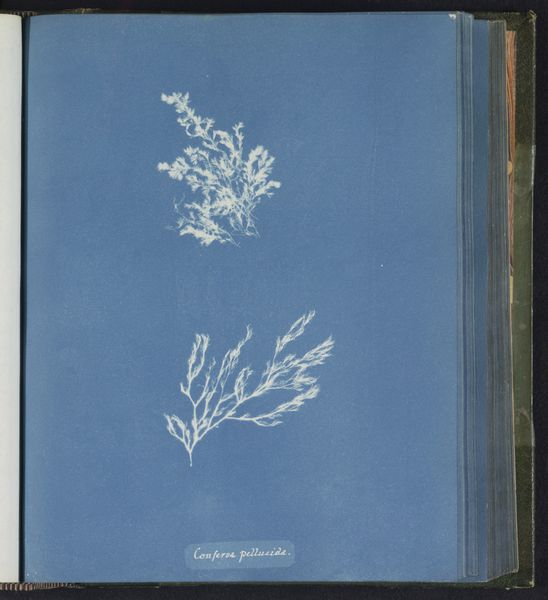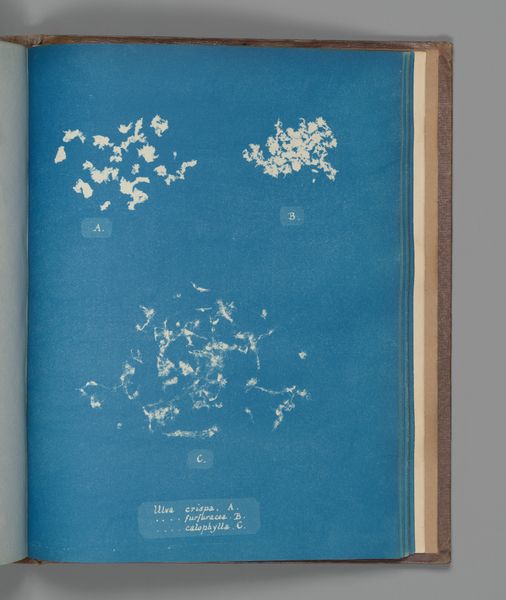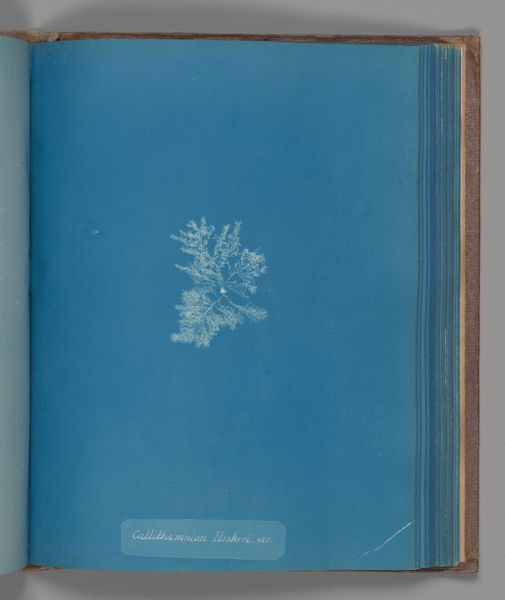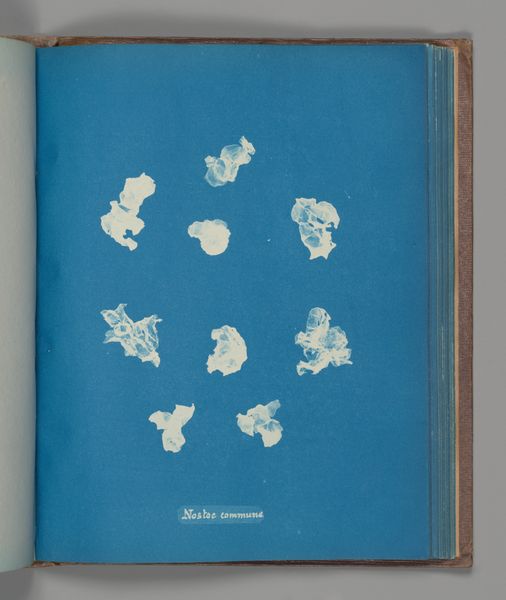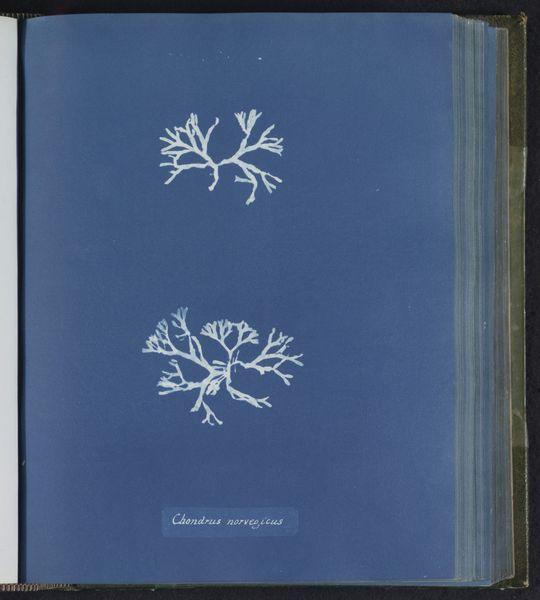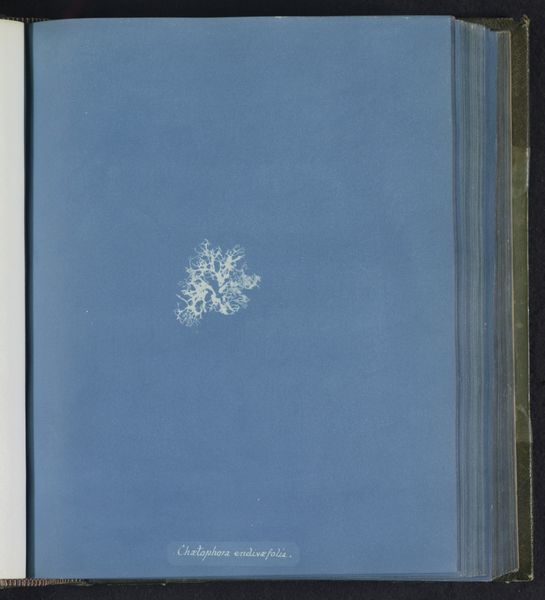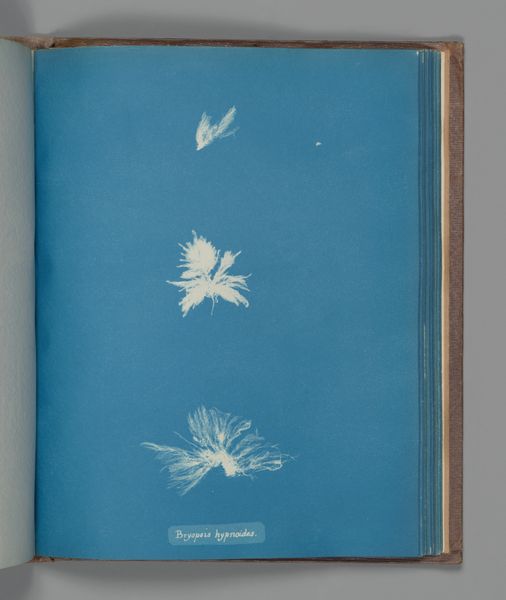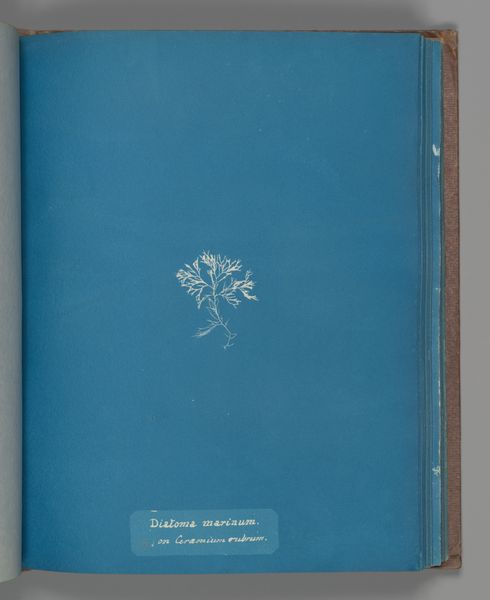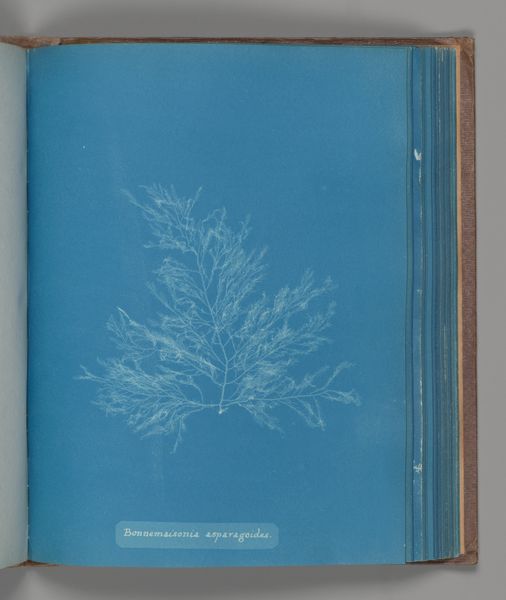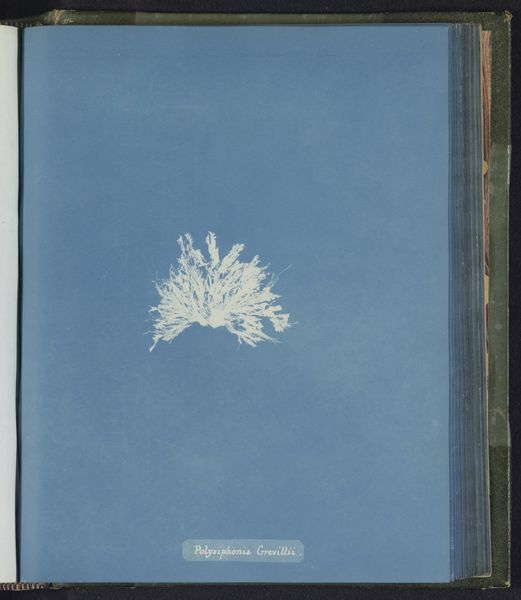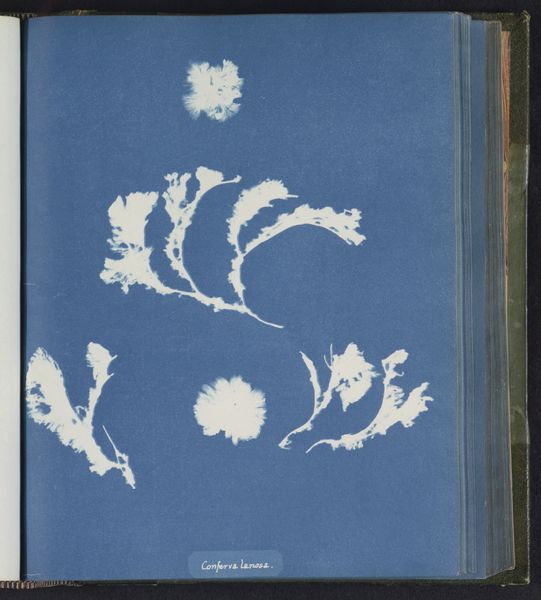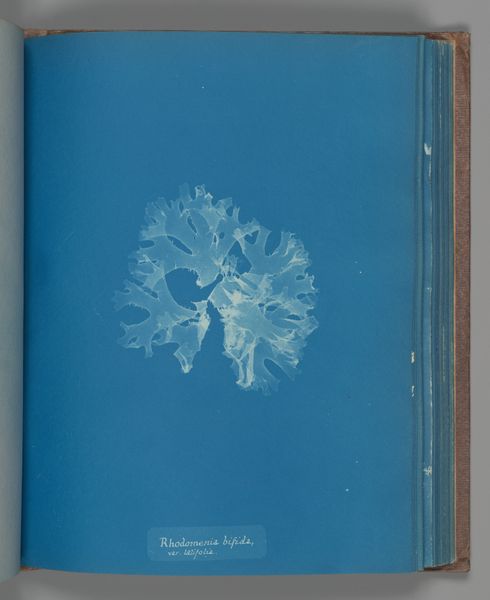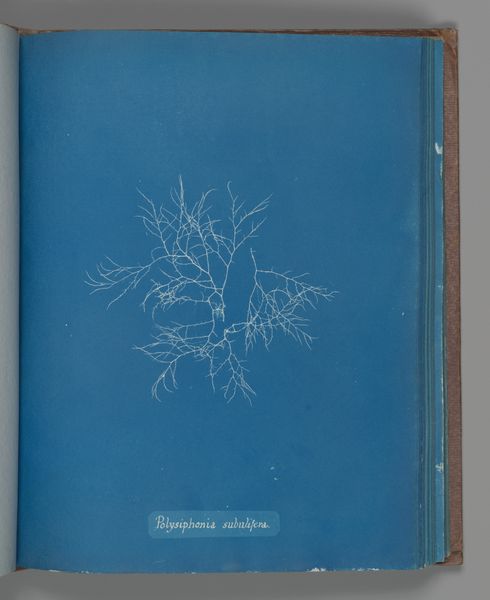![[A] Ulva crispa / [B] [Ulva] Furfuracea / [C] [Ulva] Calophylla by Anna Atkins](/_next/image?url=https%3A%2F%2Fd2w8kbdekdi1gv.cloudfront.net%2FeyJidWNrZXQiOiAiYXJ0ZXJhLWltYWdlcy1idWNrZXQiLCAia2V5IjogImFydHdvcmtzLzdmNGYzMDIxLWVkMjItNDg5OC04M2RkLTFjNmZmMGEyZDlkYi83ZjRmMzAyMS1lZDIyLTQ4OTgtODNkZC0xYzZmZjBhMmQ5ZGJfZnVsbC5qcGciLCAiZWRpdHMiOiB7InJlc2l6ZSI6IHsid2lkdGgiOiAxOTIwLCAiaGVpZ2h0IjogMTkyMCwgImZpdCI6ICJpbnNpZGUifX19&w=3840&q=75)
print, cyanotype, photography
#
still-life-photography
#
organic
# print
#
cyanotype
#
photography
#
watercolor
#
realism
Dimensions: height 250 mm, width 200 mm
Copyright: Rijks Museum: Open Domain
Curator: Well, let’s take a look at Anna Atkins’s "[A] Ulva crispa / [B] [Ulva] Furfuracea / [C] [Ulva] Calophylla," created sometime between 1843 and 1853. It’s a cyanotype, a type of early photographic print. What’s your initial impression? Editor: Stark. Haunting, even. The way the white forms pop against that intense blue… it feels almost like ghostly apparitions floating in a deep, otherworldly sea. There’s something quite beautiful and ethereal about the textures. Curator: Atkins, a British botanist and photographer, made this image, and many others like it, to document various species of algae. She's considered one of the first women photographers. Photography offered new forms of classification during that era, both broadening accessibility to images and producing new scientific canons. Editor: Ah, so it’s a scientific document? Because if you isolate each composition, the organic forms have their own visual identity: The first, dense and clustered; the second, almost frail; and the third bursting with detail. The tonality almost enhances the shape! Curator: Exactly! The cyanotype process, with its distinctive blue hue, wasn't just a technical choice but part of a broader scientific and social context. Photography at the time offered a way to democratize images but also to consolidate a certain scientific perspective of the natural world. Atkins played a key role in this development. Editor: Interesting how a technique usually seen as mechanical – the photographic print – almost creates the illusion of an abstract, dream-like, watercolor! It goes against a certain logic... Curator: I think you are spot-on. Its impact lies in this tension between scientific precision and visual wonder, don’t you think? Editor: Absolutely. This pushes me to want to analyze more. It highlights not just the object’s role within scientific history, but also shows how technical form can shape and define the visual qualities and impact of an artwork, adding dimensions beyond what the artist intended. Curator: I find this a fascinating lens, to focus on this role Atkins took during her time! Thank you! Editor: Agreed. It enriches my appreciation of these ghostly specimens so very much!
Comments
No comments
Be the first to comment and join the conversation on the ultimate creative platform.
